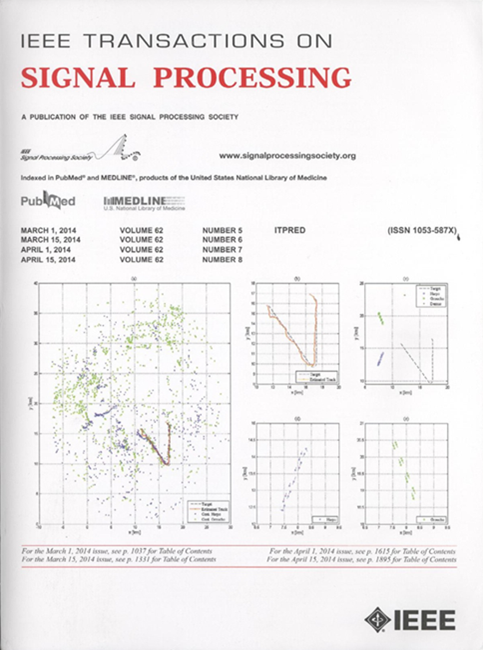用于 URA 的深度张量 2-D DOA 估算
IF 4.6
2区 工程技术
Q1 ENGINEERING, ELECTRICAL & ELECTRONIC
引用次数: 0
摘要
利用深度神经网络进行到达方向(DOA)估算在复杂环境中的应用已显示出巨大潜力。然而,传统的基于矩阵的深度神经网络会将多维信号统计数据矢量化为过长的输入,这就需要在神经层中设置大量参数。这些参数的训练需要大量的计算资源。为解决这一问题,我们提出了一种用于深度张量二维 DOA 估计的资源节约型张量神经网络。在该网络中,与均匀矩形阵列(URA)相对应的协方差张量被传播到包含基本信号特征的隐藏状态张量中。为了减少可训练参数的数量,前馈传播被表述为反 Tucker 分解,将参数压缩为反 Tucker 因子。然后设计了一个有效的张量反向传播程序来训练压缩参数,并通过贝叶斯优化调整塔克秩序列,以确保令人满意的网络性能。我们的模拟结果表明,与基于矩阵的深度神经网络相比,所提出的张量深度神经网络更具优势。在一个 10 美元乘以 10 美元的 URA 和 2 美元来源的场景中,所提出的网络将训练参数的数量减少了超过 122,000 美元倍。因此,它的训练速度更快,使用的 GPU 内存更少,即使在非理想条件和不同场景下,也能保持相当的估计精度和角度分辨率。本文章由计算机程序翻译,如有差异,请以英文原文为准。
Deep Tensor 2-D DOA Estimation for URA
Direction-of-arrival (DOA) estimation using deep neural networks has shown great potential for applications in complicated environments. However, conventional matrix-based deep neural networks vectorize multi-dimensional signal statistics into an excessively long input, necessitating a large number of parameters in neural layers. These parameters require substantial computational resources for training. To address the problem, we propose a resource-efficient tensorized neural network for
deep tensor two-dimensional DOA estimation
. In this network, the covariance tensor corresponding to the uniform rectangular array (URA) is propagated to hidden state tensors that encapsulate essential signal features. To reduce the number of trainable parameters, the feedforward propagation is formulated as inverse Tucker decomposition, compressing the parameters into inverse Tucker factors. An effective tensorized backpropagation procedure is then designed to train the compressed parameters, and the Tucker rank sequences are tuned through Bayesian optimization to ensure satisfactory network performance. Our simulation results demonstrate the superiority of the proposed tensorized deep neural network over its matrix-based counterpart. In a scenario with a
$10\times 10$ $2$ $122,000$
求助全文
通过发布文献求助,成功后即可免费获取论文全文。
去求助
来源期刊

IEEE Transactions on Signal Processing
工程技术-工程:电子与电气
CiteScore
11.20
自引率
9.30%
发文量
310
审稿时长
3.0 months
期刊介绍:
The IEEE Transactions on Signal Processing covers novel theory, algorithms, performance analyses and applications of techniques for the processing, understanding, learning, retrieval, mining, and extraction of information from signals. The term “signal” includes, among others, audio, video, speech, image, communication, geophysical, sonar, radar, medical and musical signals. Examples of topics of interest include, but are not limited to, information processing and the theory and application of filtering, coding, transmitting, estimating, detecting, analyzing, recognizing, synthesizing, recording, and reproducing signals.
 求助内容:
求助内容: 应助结果提醒方式:
应助结果提醒方式:


